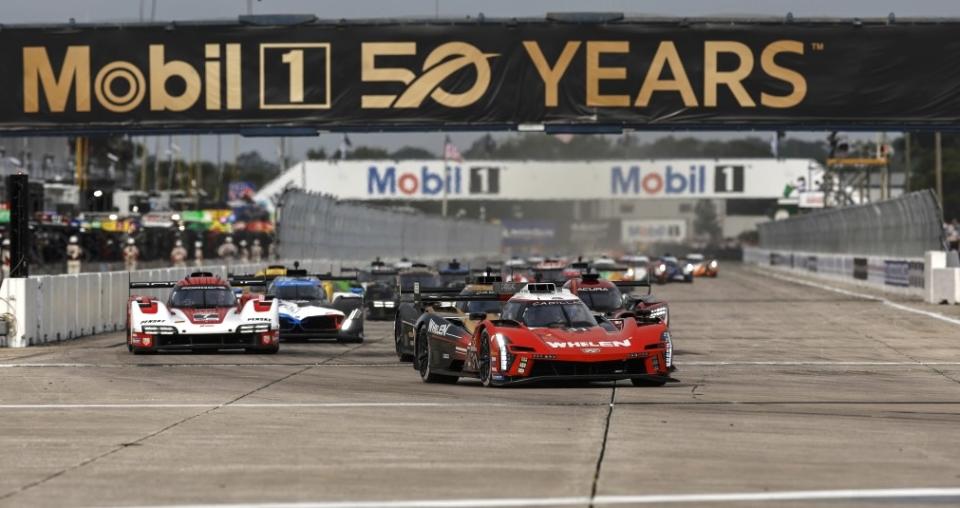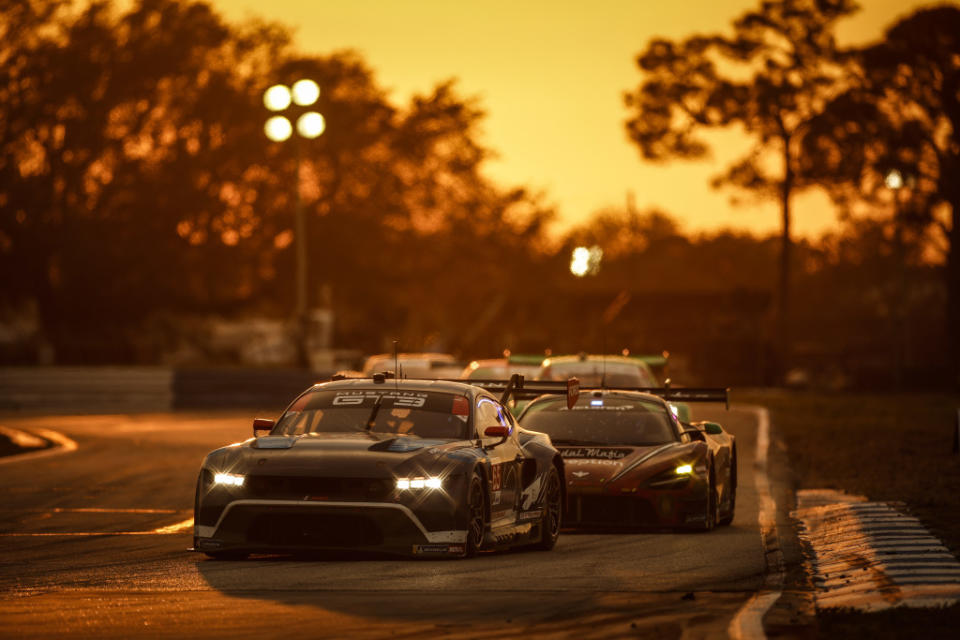‘Instant classic’ Sebring shows IMSA is over-delivering – Diffey

If every race was as good as last Saturday’s Mobil 1 Twelve Hours of Sebring, soccer and all other leagues would fall behind motor racing as the world’s favorite sport.
It was constant thrills and danger with the occasional wheel-to-wheel boxing thrown in. The defending race winner took himself out while leading and ended up upside down — unhurt, thankfully — on the tire barriers. The GTD PRO winners recovered from an early pit lane penalty that took them out of the lead. The LMP2 winner spun early and also recovered amid race strategy battles that could have sent five teams to victory lane late in the going, and like the GTD class winner, both Pro-Am teams swept Sebring and the Rolex 24 At Daytona.
And while dodging strewn tires, bumpers, fenders, headlights, and gobs of traffic, the overall win changed hands in the final minutes of the event as warring GTP manufacturers traded elation for heartbreak, and heartbreak for elation. Ragged, raw, and exhausting in the high heat and humidity, the 2024 edition of the famed race extracted all of the drama one could hope for in central Florida.
Simply put, if you were trying to write 12 one-hour episodes of a racing-themed drama, Sebring provided the script. In fact, “It was an instant classic,” says NBC Sports’ Leigh Diffey, who has called all of the world’s great endurance races.
Leigh Diffey sees the modern iteration of IMSA as the perfect blend of the ALMS and Grand Am eras. Michael Levitt/Motorsport Images
As IMSA’s new hybrid GTP cars were launched in 2023, there was plenty of talk about the start of a new golden era. While I loved the spirit of that notion, it felt premature. Golden eras take time to develop; they can’t be willed into existence before enough races have been run to decide whether something truly special is taking place.
With the necessary time and context to form an educated opinion after one season and two stellar races completed for GTP, plus the renewed popularity within the WeatherTech SportsCar Championship’s GT ranks, it’s worth asking whether what’s happening now is living up to that “golden” ambition.
“I think maybe we weren’t selling it hard enough,” Diffey surmises. “I think that it’s over-delivered. Just look how good the Lamborghini GTP team did out of the box. There’s surprises — and happy surprises — at every turn. I can honestly say, after calling the 24 Hours of Le Mans for a decade straight with some of its biggest years, and then being away for more than a decade, to come back and call modern-day IMSA and the transition into the hybrid era, I don’t think we were selling it hard enough because it’s over-delivered. It’s unbelievable.”
Diffey and I covered the former American Le Mans Series and the Grand Am Rolex Series when we worked for FOX’s SPEED Channel and raved about their respective strengths. The ALMS had the fastest and sexiest cars; Grand Am had the closest racing, and when they merged into the new-era IMSA in 2014, immense potential was held for the blended approaches to endurance sports car racing.
It took more than a few seasons for today’s IMSA to find its identity after trying to mash different formulas together under one championship banner, but with the advent of the DPi formula, and the move to GT3 regulations and the shift to hybridization with GTP, IMSA has found its heart.
“I go back to the fierce and at times bitter rivalry between the ALMS and Grand Am,” Diffey said. “Both series had their ups and their downs. And one of the ups the ALMS had was the huge manufacturer involvement and the sexy cars and the glitz and the glamour. What Grand Am had going for it was the quality of the racing and the simplification of it classes. I just love IMSA today because it truly is a blend and an extension of the ALMS and Grand Am. It’s two prototype classes now, with GTP at the very top and LMP2 as the gateway class for your Pro-Am drivers, and it’s the same with GTD PRO and GTD for pro-ams in GT. It’s easy to follow and just look at how big the Sebring race was. Fans are loving everything about it. The story of IMSA is the celebration of sports car racing. Where it is right now, holy hell, it is incredible.”
Even before the renewed Ford-vs-Chevy battle reaches fever pitch, IMSA GT competition has plenty more storylines to follow. Michael Levitt/Motorsport Images
The other remarkable component of IMSA’s golden rise is found within its GT paddock. Headlines leading into Daytona in January centered on the return of Ford with its Mustang GT3 and the resumption of its life-long rivalry with General Motors, which also debuted its new Corvette Z06 GT3. While the Chevy-vs-Ford angle might have overshadowed some of the early season storylines, the biggest news in GTD and GTD PRO is how the other nine manufacturers are thriving and earning well-deserved attention for their efforts and achievements through Sebring.
“Those are new cars for them and soon we’ll be able to shout from the rooftops about the Ford-vs-Chevy battle, but in the meantime, what I love in commentary — in addition to calling the cut and thrust of the racing — was right up until the very end of Sebring, you look at the timing monitor, and there were like seven different GT manufacturers in the top seven positions,” Diffey said.
“We saw that all throughout the race. What series in the world say that? It was unreal. It was a Porsche leading a Mercedes leading a Lexus leading a Ferrari leading a Lamborghini leading another brand. For a series that grinds and works so hard to keep all those manufacturers happy, to see that playing field level and the activation and everything that’s involved in sports car racing on and off the track, Sebring was a showcase dusted in gold glitter.”

 Yahoo Autos
Yahoo Autos 

